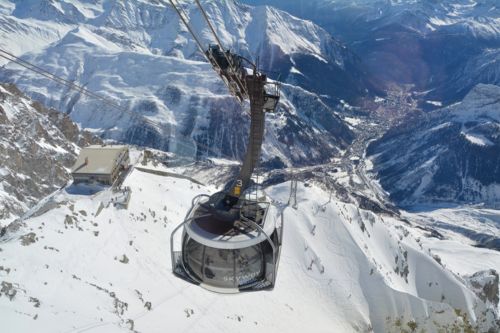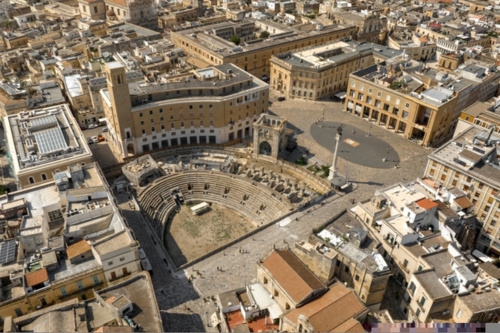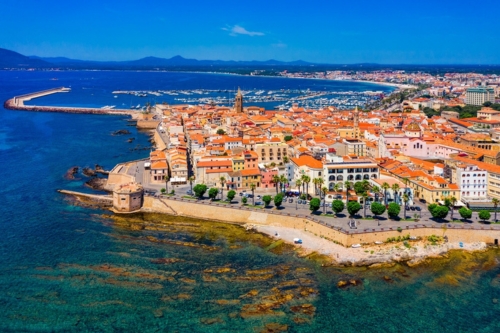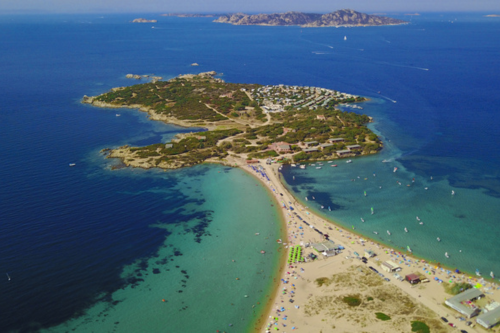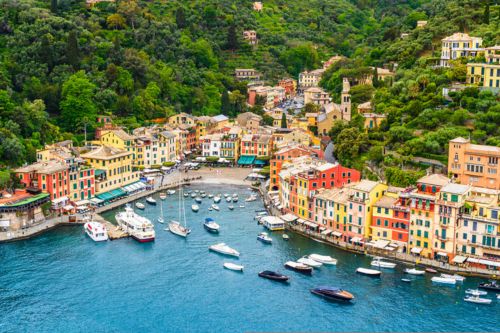Tuscany road trip itinerary with the best scenic drives
Blog Published: July, 06 2022 (Updated On: April, 07 2025)Join us on a remarkable Tuscany Road trip. Get ready for breathtaking scenic drives through enchanting landscapes, charming villages, and historic towns. Our curated itinerary will take you on an unforgettable journey through Tuscany's natural beauty, rich history, and rich cuisine. Let's hit the road and explore the best of Tuscany together.
![]() The iconic cypress-lined road in Asciano, Province of Siena, Crete Senesi
The iconic cypress-lined road in Asciano, Province of Siena, Crete Senesi
How many days do you need in the Tuscan countryside?
The number of days you need in the Tuscan countryside can vary depending on your interests and the specific places you'd like to visit. However, to get a good taste of the region and explore some of its highlights and historic sites in Tuscan countryside, we would recommend spending at least 4 to 7 days there.
How do you explore the countryside of Tuscany?
To explore the countryside of Tuscany, there are several ways you can go about it. Renting a car is a popular option as it allows you the flexibility to explore at your own pace and visit more remote areas.
You can also consider cycling tours, which are a great way to enjoy the picturesque landscapes and get closer to the local culture. Alternatively, you can join organized day trips or hire a local guide who can take you to the hidden gems of the region.
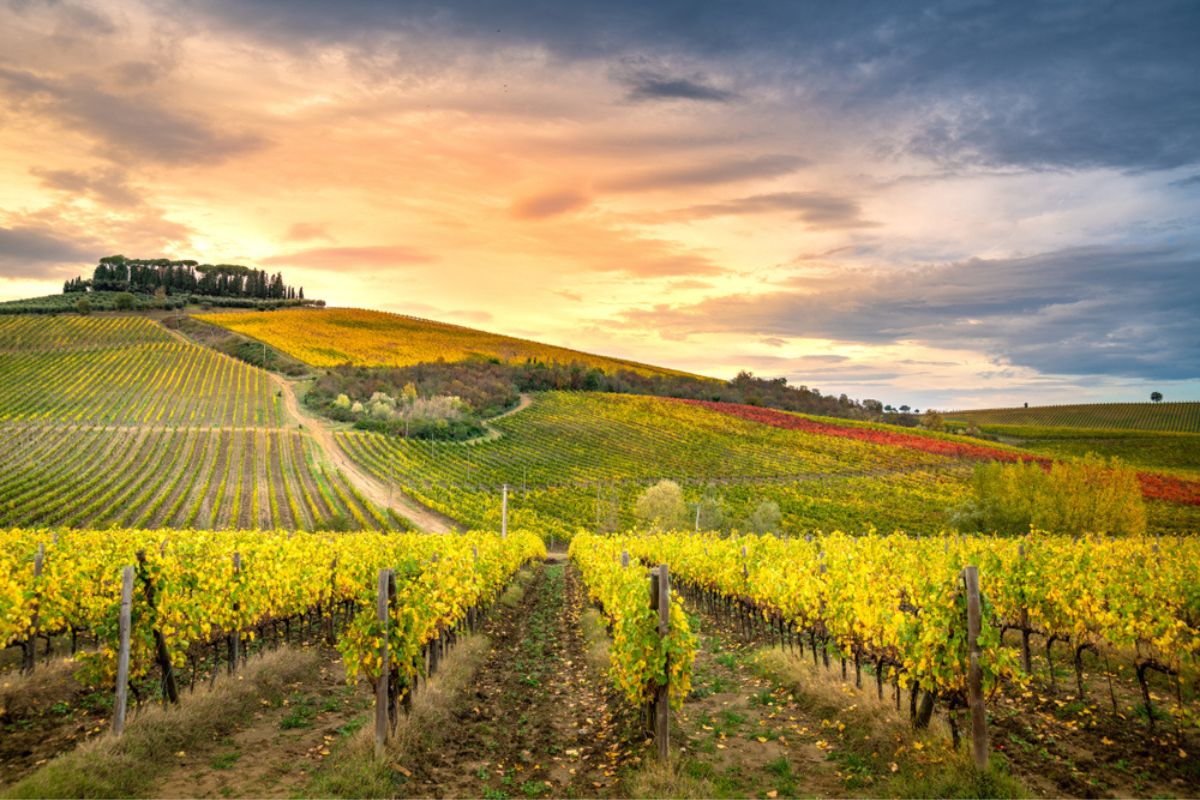 The peaceful Chianti landscape in the heart of Tuscany
The peaceful Chianti landscape in the heart of Tuscany
How long does it take to drive around Tuscany?
The time it takes to drive around Tuscany will depend on the specific route you take and the stops you make along the way. If you're following our Tuscany countryside itinerary and you want to visit multiple cities and towns, it could take anywhere from 3 to 7 days or more, depending on how much time you spend in each place and how leisurely you want to make your journey.
Is driving around Tuscany difficult?
Driving around Tuscany can be a wonderful experience, but it can also present some challenges, particularly if you're not accustomed to driving in Italy. The countryside roads in Tuscany can be narrow, winding, and sometimes steep. Some areas may have limited parking options, and you may encounter traffic congestion in popular tourist destinations during peak seasons. It's important to familiarize yourself with local driving laws and be prepared for the driving conditions you may encounter. However, the stunning landscapes you are going to see, are totally worth it!
So, what are you waiting for? Get in your car and experience the best scenic drives in the Tuscan countryside!
Lucchesia: Magnificent villas and medieval villages
Let's start our itinerary in the Tuscan countryside in the plain of Lucca–crossed by Via Francigena, the great medieval pilgrimage route along which villages, castles, abbeys and parish churches were built.
Lucchesia is famous for its magnificent villas, surrounded by natural parks. In Capannori you can visit Villa Torrigiani, Villa Mansi and Villa Reale di Marlia. Meanwhile in its surroundings, you can walk and admire the beautiful camellia cultivations by choosing two itineraries: the historical or the Camellia itinerary.
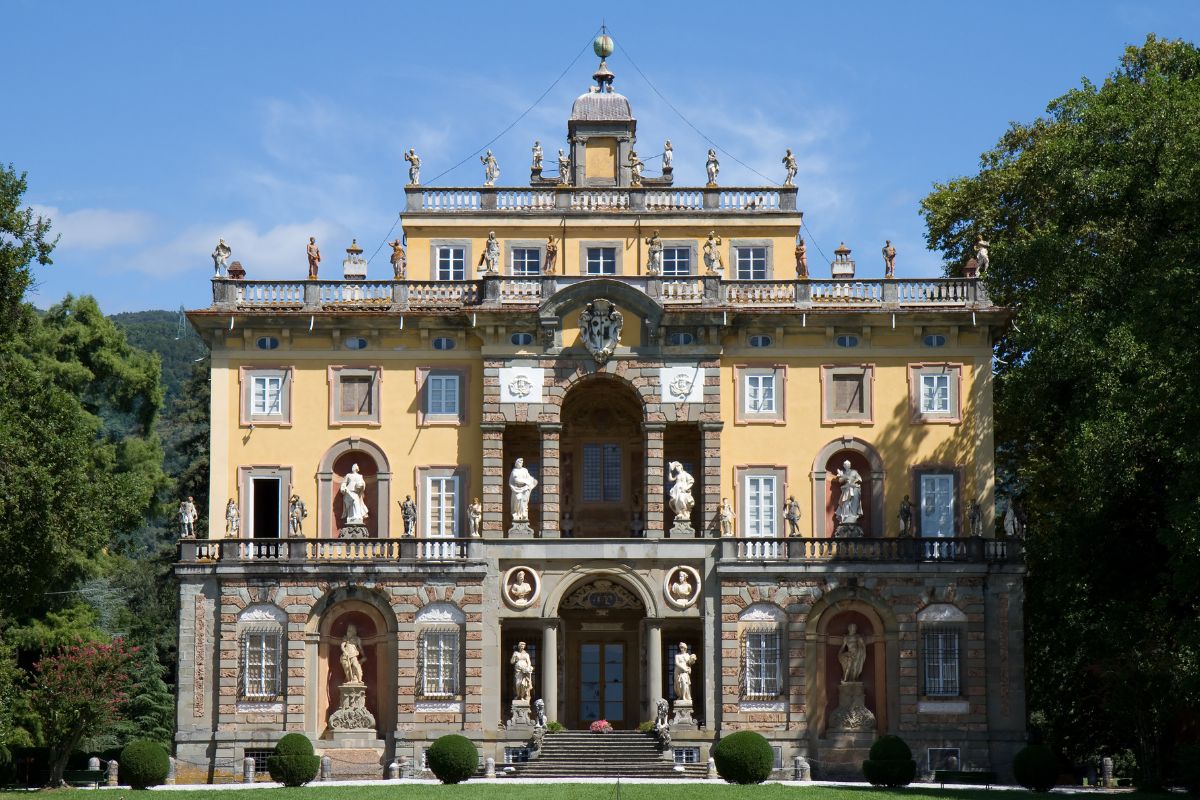 The majestic baroque facade of Villa Torrigiani
The majestic baroque facade of Villa Torrigiani
Lucchesia is also famous for cycling tourism. More sporty travellers will certainly appreciate 'Le Vie della Pantera', one of the most famous Cycling routes in Tuscan countryside, that allow you to visit various attractions, perhaps making use of an e-bike for the more demanding routes.
Tip: If you want to stay in these parts, we suggest the well-equipped and elderly-friendly accomodation Casa Andreini.
Chianti: Food and wine tours amidst the rolling hills
Next is the Chianti region, famous all over the world for its hilly landscape dotted with medieval villages, monasteries, churches and villas and, of course, its wines. Almost all municipalities in this area contribute to the production of Chianti wine. To know more follow our Chianti itinerary!
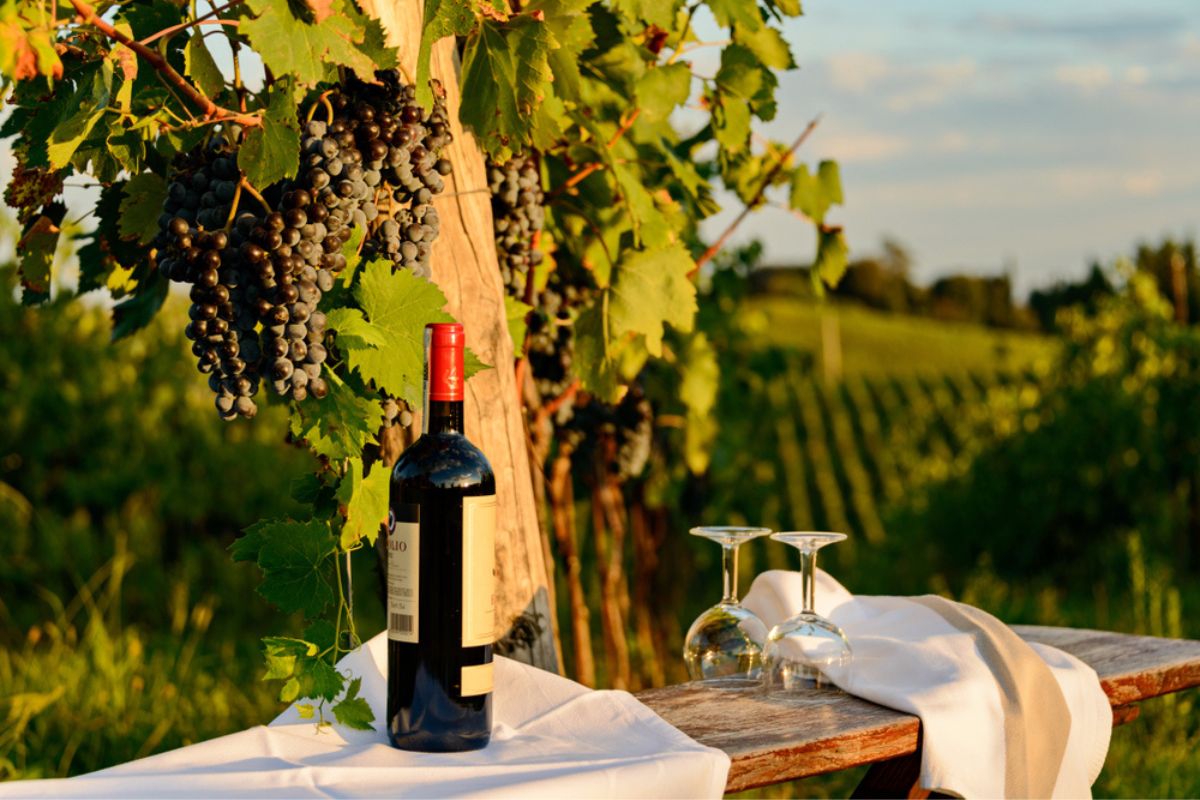 A Chianti wine tasting in Tuscan countryside
A Chianti wine tasting in Tuscan countryside
For quick access by car to any area of Chianti countryside, it is almost obligatory to use the Florence-Siena motorway (RA3), and then using any of the exits along the way. You can select between two routes: Via Chiantigiana (SR222) and Via Cassia (SS2); both roads allow you to visit parish churches, castles and villages as well as several wineries where you can buy wine directly from the producers!
Among the castles, Castello di Volpaia (Radda in Chianti) and Castello di Meleto (Gaiole in Chianti), both have their own wine production. Other municipalities involved in the production of the well-known Chianti Classico wine are: Castellina in Chianti, Greve in Chianti, Barberino Val d'Elsa, Castelnuovo Berardenga, Poggibonsi, S. Casciano in Val di Pesa, Tavarnelle Val di Pesa.
Tip: If you visit Chianti between April and May, don’t miss the Domeniche in Chianti, wine and food itineraries in Castelnuovo Berardenga, and the Cantine Aperte, an initiative that takes place in various locations to discover the wines and wine traditions of Chianti.
If you would like to stay in the "garden of Europe", we have several options for you, such as this spacious and characteristic villa in Radda in Chianti which is ideal for holidays with the whole family.
Terre di Siena: Between artistic heritage and nature reserves
Continuing along the Via Cassia or choosing the Raccordo Autostradale 3 of the Florence-Siena Superstrada, you can make a stop in Siena - a historic Tuscan city of art and a destination not to be missed by anyone passing through.
Once in Siena, you can visit Piazza del Campo, famous for its shell shape and home to the Palio di Siena. At Piazza del Campo, you can also visit the Torre del Mangia for a wonderful panoramic view of the city as well as the monumental complex of the Duomo di Siena, the Casa-Santuario di Santa Caterina and numerous museums.
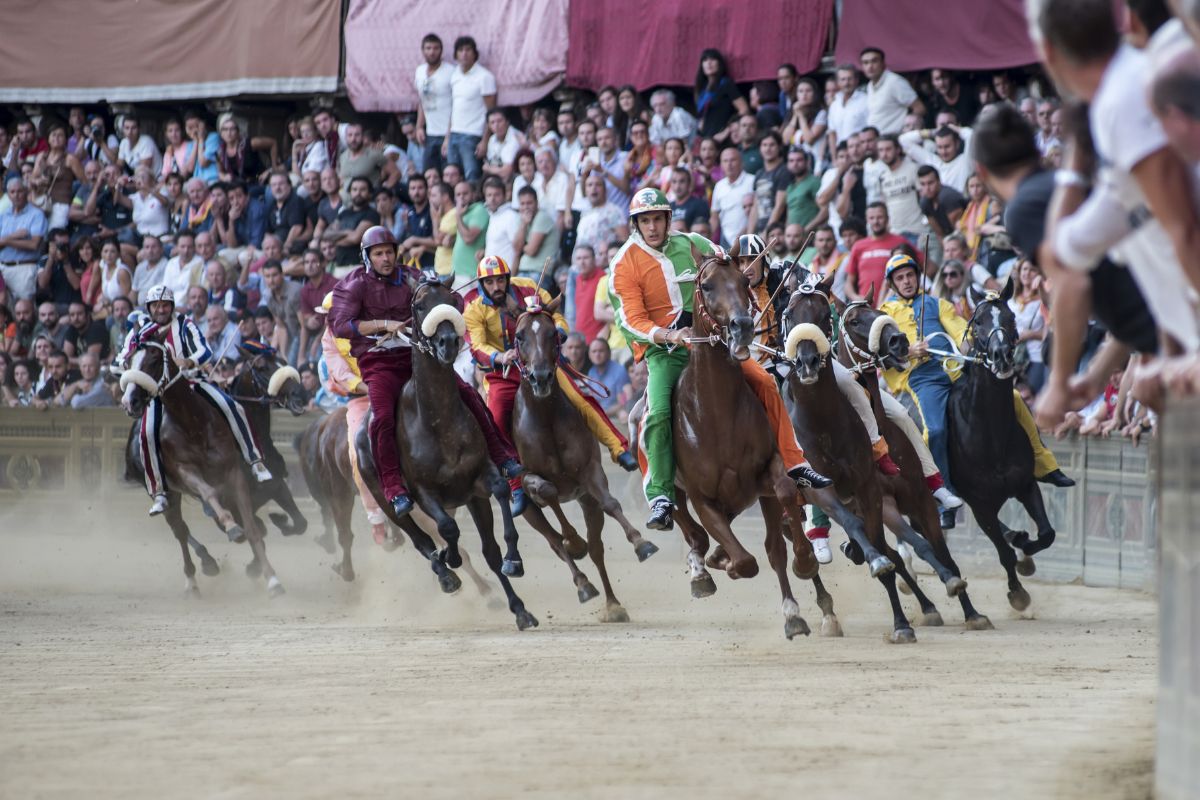 Jockeys competing at the famous Palio di Siena
Jockeys competing at the famous Palio di Siena
At the end of the tour, you can have lunch in one of the many local trattorias with typical dishes such as pici, ribollita and mixed roast. Don't forget to buy traditional sweets such as the characteristic ricciarelli (sweets made of almond paste), panforte and cavallucci. Also, very popular is panpepato, an ancient sweet made with honey, almonds and pepper!
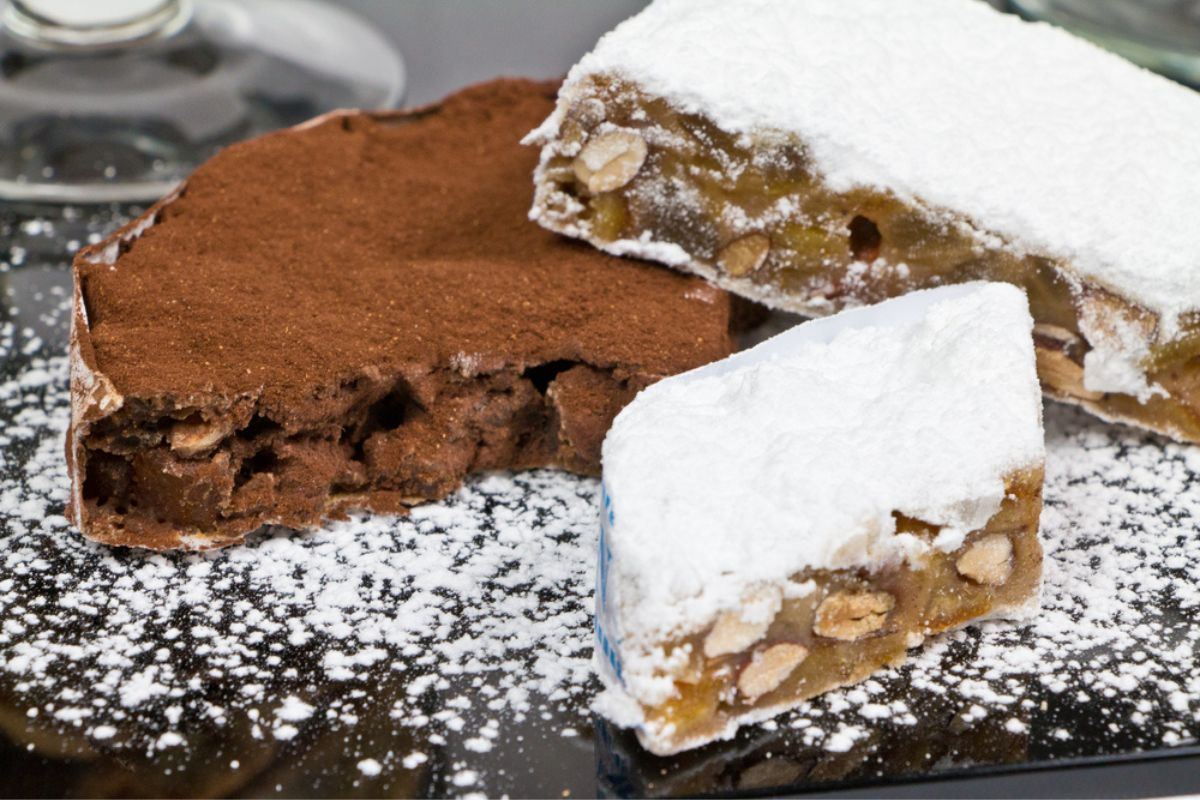 The delicious Panforte, a must-try typical dessert from Siena
The delicious Panforte, a must-try typical dessert from Siena
About 40 km from Siena, via the Florence-Siena motorway junction, you can reach San Gimignano, a municipality whose 13th-14th century appearance has remained intact. You can go to one of the many nature reserves, of which the main ones are: Basso Merse, Cornate e Fosini and Farma.
Tip: Have a break and book your stay in the lovely San Gimignano
Crete Senesi: The almost lunar landscape
Still travelling along the Via Cassia (SS2), in the stretch between Siena and Buonconvento, we can begin our tour through Crete Senesi route.
![]() Iconic winding streets of Crete Senesi lined with cypresses
Iconic winding streets of Crete Senesi lined with cypresses
The bare, weather-eroded hills of Crete Senesi have the appearance of an almost lunar landscape that is by no means devoid of charm. This landscape is interrupted by patches of cypresses and pines as well as meadows and clearings where sheep graze. In fact, the pecorino cheese of Crete Senesi is one of the typical products of the area, together with the white truffle for which a famous Truffle Exhibition is organised in San Giovanni d'Asso.
If you are in this area in May, from the second to the third Sunday of the month in Rapolano Terme, you can attend Serremaggio: a folkloristic event that includes a medieval re-enactment accompanied by traditional shows as well as gastronomic and other events. In Rapolano Terme, you also can relax in the thermal waters of its two most important spas: Querciolaia and San Giovanni.
Other attractions worth visiting are Buonconvento, a medieval village, and historical buildings such as the Abbey of Monte Oliveto Maggiore (near Asciano) and the Fortress of Serre, also in Rapolano Terme.
Val d'Orcia and its 'crete'
Continuing along the Via Cassia, not far from the Crete Senesi and located between the provinces of Siena and Grosseto, we reach Val d'Orcia - a UNESCO World Heritage Site.
Val d'Orcia constitutes the Artistic and Cultural Park of the Val d'Orcia characterised by barren, clayey areas called 'crete' and is crossed by the river Orcia from which it takes its name. In the background is Mount Amiata, whose slopes are covered by a forest of chestnut and beech groves furrowed by streams and torrents. In this enchanting Tuscan landscape, one can visit places such as Castiglione d'Orcia and its Rocca di Tintinnano, Montalcino with its Fortress, and the nearby Abbey of Sant'Antimo, Pienza, Radicofani and San Quirico d'Orcia.
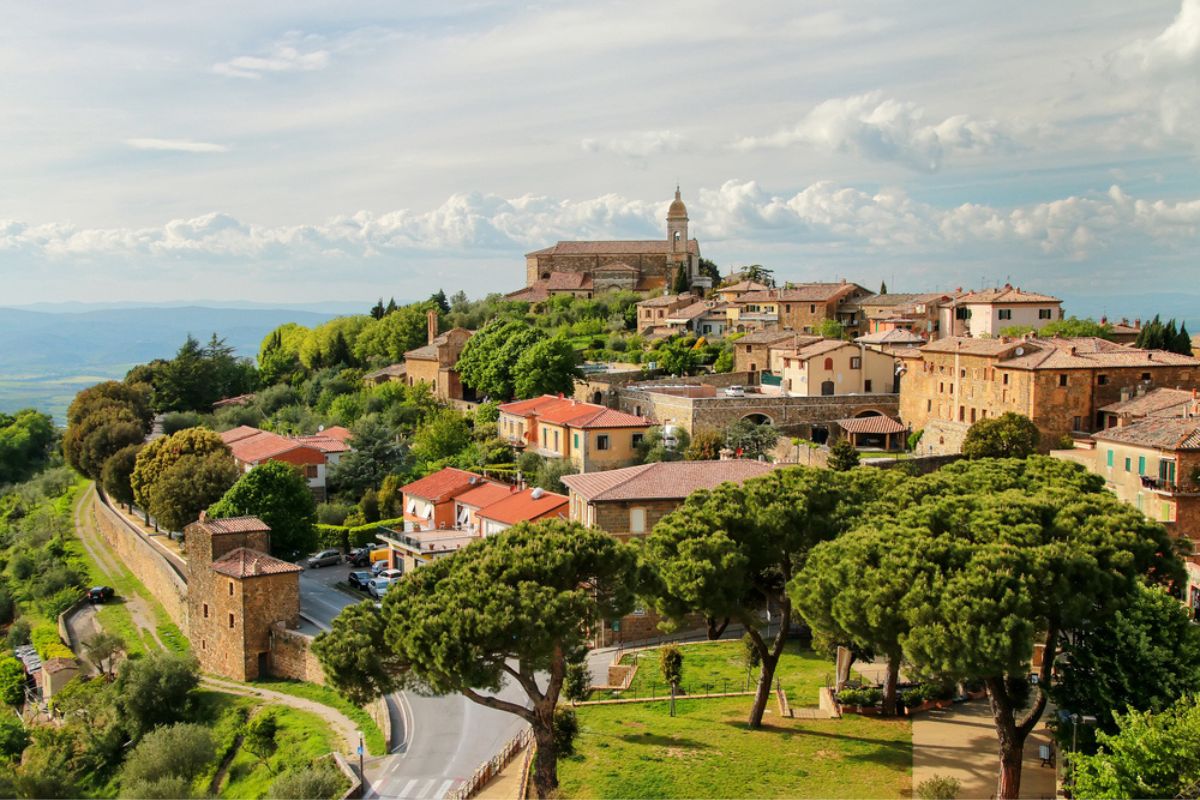 The quiet village of Montalcino, home of the famous Brunello di Montalcino
The quiet village of Montalcino, home of the famous Brunello di Montalcino
If you want to experience dining in this region, you can sample the typical products of this area, such as Cinta Senese salami (black and white pork) and Pienza cheese accompanied by fine wines such as Brunello di Montalcino, Rosso di Montalcino and Orcia DOC.
Tip: If you plan to stay longer in the Val d'Orcia, stop in Montalcino, a picturesque medieval town, and visit the Padelletti winery, the oldest and the only one remaining within the walls of the town.
If you start your itinerary from Siena, you can visit the Val d'Orcia by travelling on a vintage train, the Treno Natura. During the approximately one-day trip, you can hike on the paths between the various stations, enjoy horse-drawn carriages, visit the main monuments, have lunch in typical restaurants, and participate in village festivals and recreational activities.
North and South Maremma
Entering the southern part of Tuscany, towards the province of Grosseto, we finally arrive in Maremma. The recommended route is both through Via Aurelia (SS1), the original route, and the four-lane variant (Aurelia bis). However, the area can be reached via other internal roads too.
Bounded by the Metalliferous Hills, which give this Tuscan landscape its bright colours due to the presence of metals in the soil, and towards the coast, by the reliefs such as the Monti dell'Uccellina and Argentario, the Maremma is home to medieval jewels, Etruscan archaeological sites and several blue flag beaches.
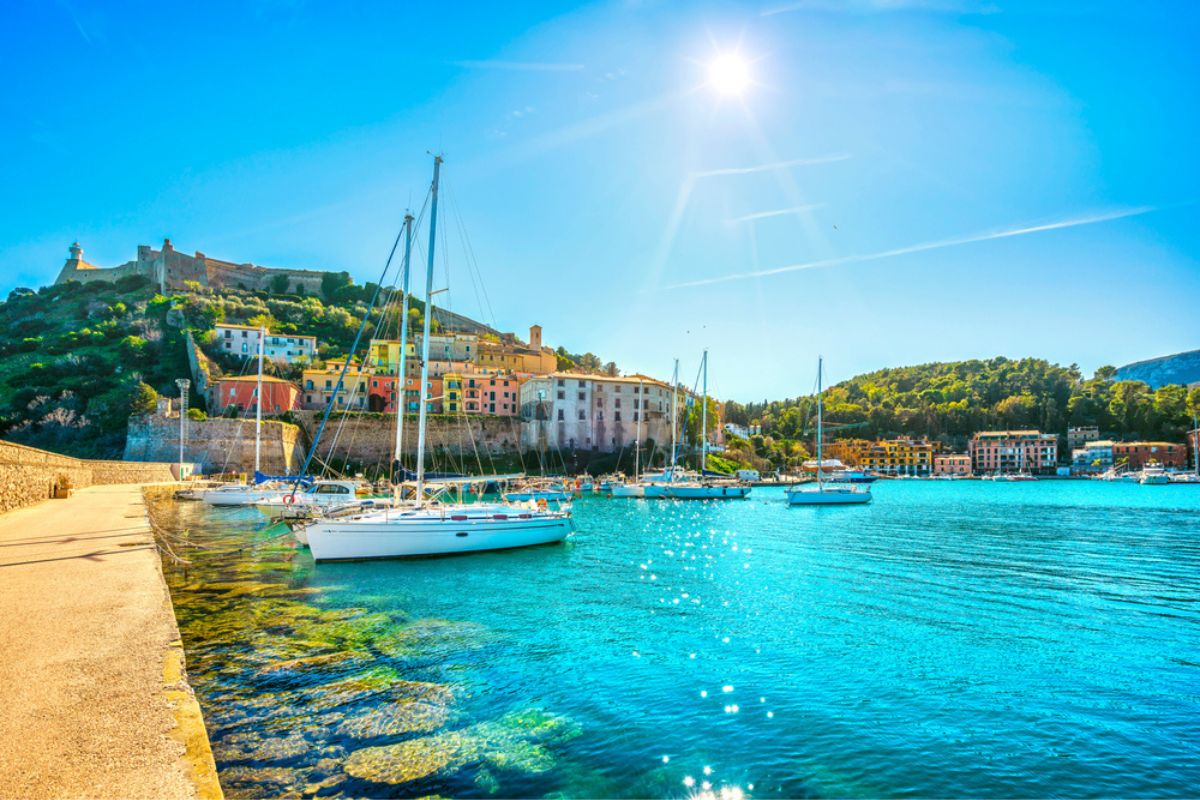 The charming harbour of Porto Ercole in Maremma
The charming harbour of Porto Ercole in Maremma
On warmer days, you can take advantage and visit one of the many beaches such as those at Castiglione della Pescaia, Follonica, Marina di Capalbio and others.
Or you can relax at the famous Terme di Saturnia and Terme di Petriolo. Near Capalbio, you can visit the Tarot Garden, taking advantage of the reduced entrance fee for the over-65s. Plus, nature lovers would not want to miss the Maremma Regional Park with its various itineraries.
Tip: If you want to visit the Park, we recommend that you book a guide in advance.
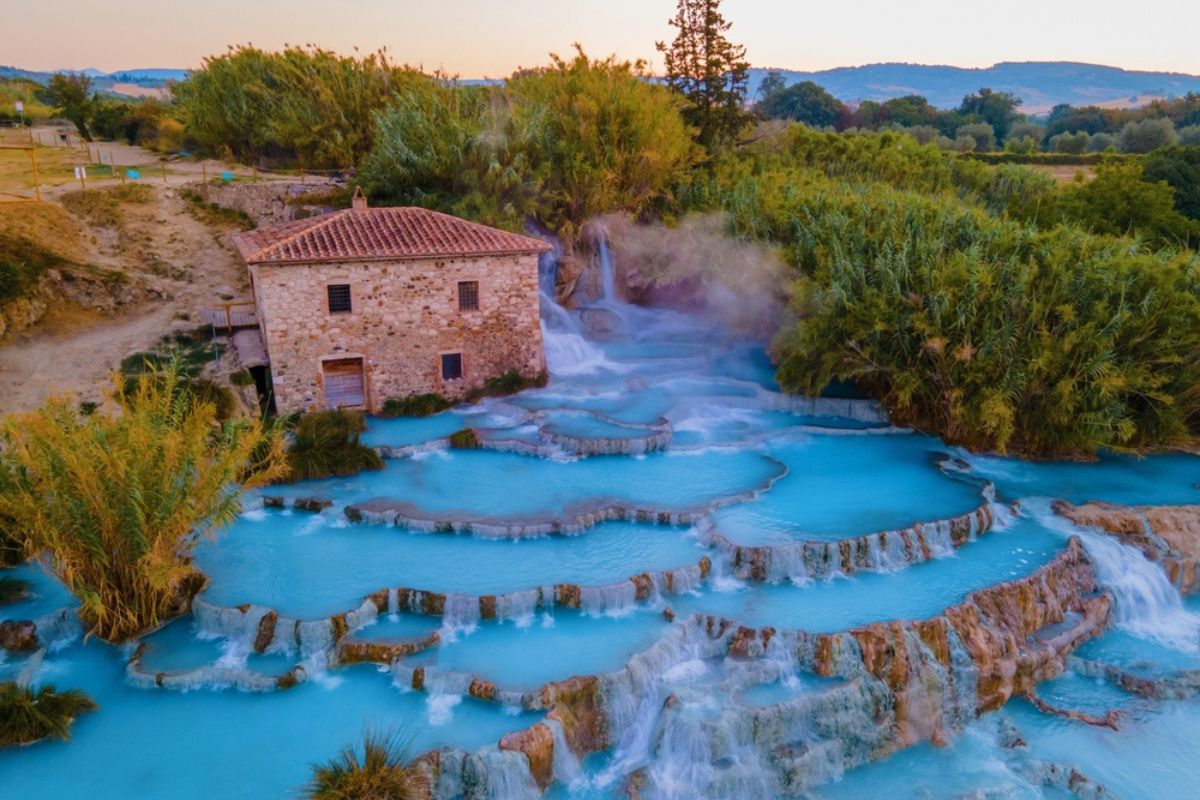 The relaxing waters of the thermal baths of Saturnia
The relaxing waters of the thermal baths of Saturnia
A jewel of medieval architecture is Massa Marittima, and not too far away is another town with medieval architecture, Roccastrada, where you can stay in one of our holiday homes such as the Tenuta di Litiano if you are in the company of your four-legged friends, and the Appartmento Uva Shared Pool.
Nearby you can explore important archaeological sites from the Etruscan period such as the Vetulonia Archaeological Area and the Accesa Lake Archaeological Park.
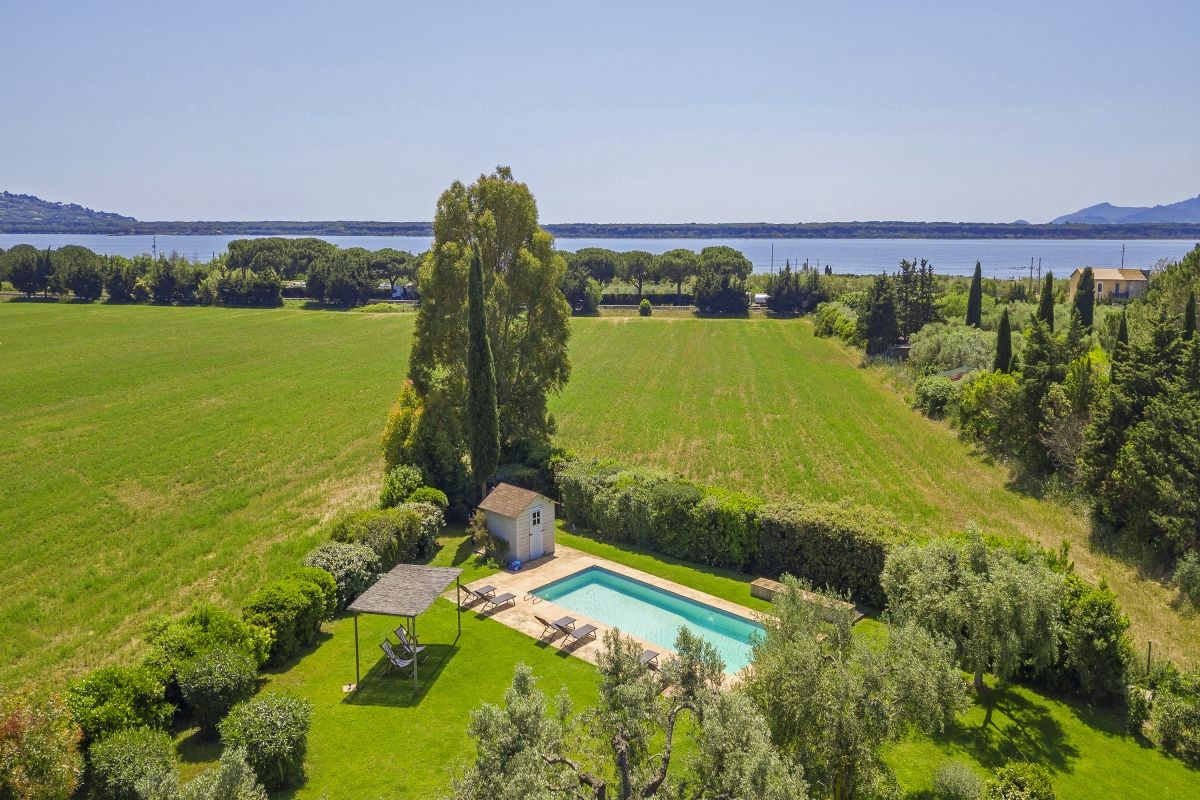 The wonderful Vignarola Chalet (ID 5843) immersed in the Tuscan countryside
The wonderful Vignarola Chalet (ID 5843) immersed in the Tuscan countryside
You will certainly want to stay several days in Tuscany, plus you can choose any of our holiday rentals in the Tuscan countryside such as the beautiful Villa Angela in Monticiano Terme, the Chalet Vignarola and the spacious Casa Giannellina in Orbetello.
Still haven't found the right accommodation for you? Look at all our holiday homes in Tuscany.

